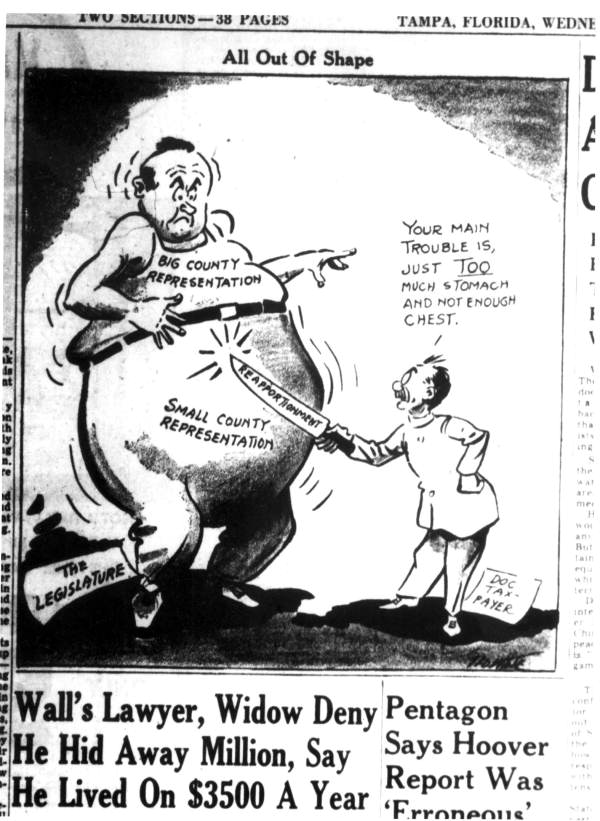In the 1950s, Florida had one of the country’s least representative Legislatures, with the northern counties dominating both the House and the Senate. The group of senators representing these counties were known as the Pork Chop Gang – for their powerful “pork barrel” spending – and for their fights against redistricting efforts in the 1950s and 1960s that would have given greater power to more populous and racially diverse parts of the state.[1] Virtually every northern county had its own senator, while Southern Florida had a burgeoning population and much less representation in the Legislature.
The term “gang” was fairly accurate. In 1955, the senators are said to have gathered at a North Florida fishing camp to take a “blood oath” committing to preserving the Southern way of life: rural values, racial segregation, and minimal government.”[2] In the mid-1950s, the Pork Chop Gang was deeply entrenched against reapportionment of the Legislature, integration of schools and society, and efforts to increase state revenue and services. The Pork Chop Gang’s hold on the Legislature perpetuated segregation, and their provision of tax breaks for businesses was a loss of state revenue that could have been used for public education. This chronic underfunding would be identified as one factor in the 1968 teachers’ strike.
For more information about the Pork Chop Gang, visit other policy areas of The Florida Timeline:
References:
[1] Kevin Norman Klein, ‘Guarding the Baggage: Florida’s Pork Chop Gang and Its Defense of the Old South’, Florida State University, doctoral dissertation.
[2] Mary E. Adkins ‘Making of Modern Florida: How the Spirit of Reform Shaped a New State Constitution’, Gainesville, Florida: University Press of Florida, p.11.
